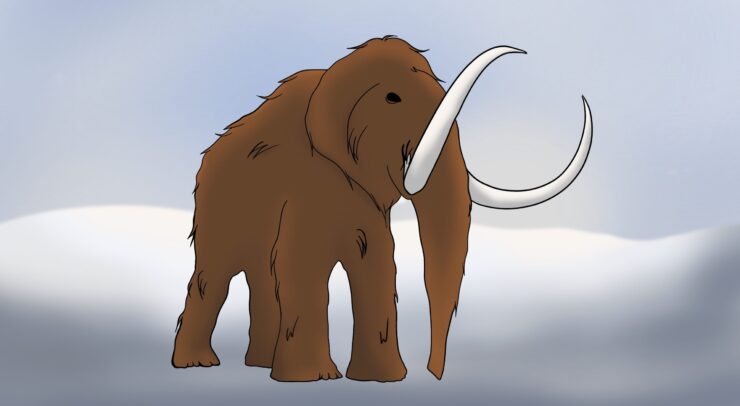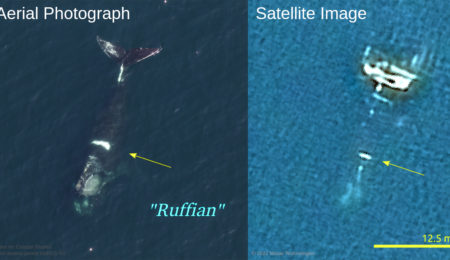Bataille’s research is in collaboration with Mathew Wooller, a professor from the University of Alaska Fairbanks, and many others from around the world
On Aug 13, 2021, University of Ottawa professor Clement Bataille published an international study titled “Lifetime mobility of an Arctic woolly mammoth.” Bataille’s research is in collaboration with Mathew Wooller, a professor from the University of Alaska Fairbanks, and many others from around the world. The researchers’ main goal was to study the movements of extinct mammoths.
In an interview with the Fulcrum, Bataille explained his research method further.
“So, in the beginning, we were just waiting to find the right tusk. What we wanted was a tusk that was fairly recent in terms of age. We found one that was 17,000 years ago, which is relatively close to when mammoths went extinct. We were also trying to find a male, because we knew that males probably moved more than females,” said Bataille.
In the meantime, Bataille worked on developing the models that would predict the strontium isotope. An isotope is a variation of an element that exists under a different number of neutrons. Carbon 12, carbon 13, and carbon 14 are all isotopes of carbon — they’re different forms of carbon that still have the same properties. However, the carbon isotopes all have slightly different masses due to the different number of neutrons in the nucleus.
“What’s interesting about isotopes is that they vary on the landscape predictively, in our case, we were interested in strontium, and strontium has different isotopes that vary under landscaping abundances based on geology. In Ottawa for example, there is a carbonate, sedimentary type of geology. Whereas in Gatineau the strontium isotope signature will be different because the rocks are much older, and more metamorphic,” Bataille continued.
This geographical variation means, for instance, that a deer’s developing antler will pick up on the specific strontium signature of the grass it consumes on the Ottawa landscape due to the underlying geology. As it moves across the Gatineau valley, the strontium isotope will shift to represent the isotope found in the Gatineau hills.
Bataille explained the scientists’ next step: “Once we’ve measured the strontium isotope along the mammoth task, we also need to have a map that can predict how the isotope will vary on the Alaskan landscape.To do this, we used rodent teeth. What’s nice about rodents is that they’re local, they stay in one specific location. Therefore, they represent the local strontium isotope of the ecosystem at like one square kilometer. So we measure the strontium in their teeth and we do that for hundreds and hundreds of rodents all across the landscape. That gives us a nice data set that has rodent teeth measured in different geology, different temperature and topographic conditions. Then we can use artificial intelligence to try to create a map that predicts how this strontium is varying across the landscape.”
According to Bataille, a mammoth tusk grows in a very particular way: it grows by adding layers through time. If one were to slice through the tusk, it would look like a series of piled-up ice cream cones, and each increment layer would be one day of the mammoth’s life. That’s how researchers were able to date the time of death, and then from the time of death, they calculated the number of days back backward. From this information, researchers were able to date the mammoth through space and time.
In the last two years of the mammoth’s life, researchers were able to identify a spike in nitrogen isotope levels in the tusk. Nitrogen isotope is used to predict the health of the mammoth, because when a mammal is not in good health, there’s an imbalance in their nitrogen cycle, which creates a big variation of nitrogen isotopes in the tissue of the mammal. Knowing the mammoth is not in good health, researchers could then backtrack from its point of death through its life movements. This method limited the number of possible areas the mammoth could’ve gone because this individual is not likely to travel great distances in the last weeks of his life.
“At the end, we don’t have only one track, we have a bunch of possibilities of tracks, but they all show similar sort of mobility patterns and history fundamentals. So that’s why we use them to draw bigger conclusions.”
Bataille explained what the results of their study revealed about the mammoth.
“The bigger surprise was the range. The mammoth basically covered the entire study area of Alaska. This just shows the huge range of mammoths. Another thing we saw was that he liked a few areas that we call the core areas, and this tends to be like nice valleys, like the Yukon River valleys. So this movement in this core area is typical in mammals from about zero to 17 years old. So when mammoths become adults, we start to see independent behaviour and movement along very far bigger distances. This is also similar to what you see in elephant herds a male elephant of between the ages of 15-17 will get kicked out of the maternal herd and they start to just roam around between herds. So that really tells us about how the mammoth is behaving and moving which is fairly similar to an African elephant.”
In the long term, the reconstruction of the mammoth’s movements can help scientists better understand extinction. By understanding the characteristic of mobility of this particular species, how they are interacting with reproduction or aging, can influence why they might have been extinct. As scientists like Bataille begin to uncover why extinction occurred, then this knowledge can be applied to current species facing extinction.
In the future, Bataille would like to continue his research with mammoths, particularly female ones and how climate affects their mobility across a landscape. Additionally, he hopes to study dinosaur teeth from the nature museum here in Ottawa using a similar isotope modeling technique. To learn more about Bataille and his research, visit his website here.





